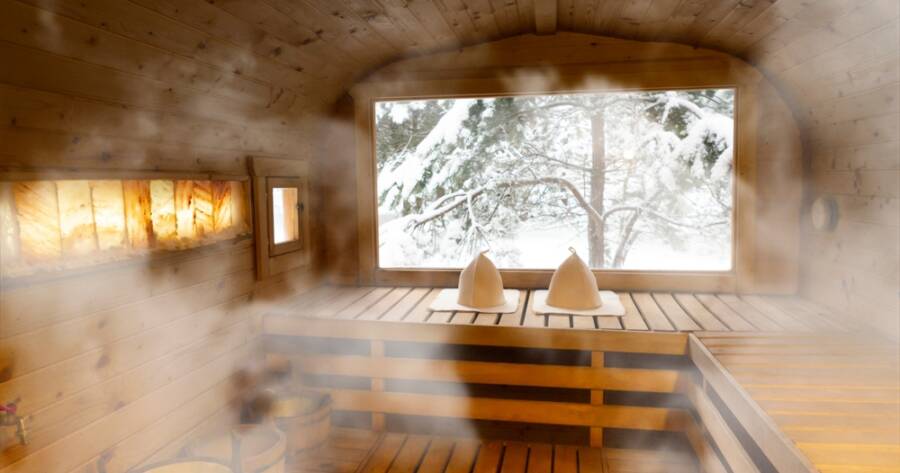In recent years, home saunas have become a popular addition to many households. They provide a relaxing and rejuvenating experience while also offering potential health benefits like detoxification. Whether you’re looking to relieve stress or improve circulation, a home sauna can provide these advantages in the comfort of your own home. However, before making the investment, it’s important to understand the costs involved in owning a sauna.
Types of Home Saunas: What’s Right for You?
Before discussing costs, it’s essential to understand the different types of saunas available. The two main options for home saunas are traditional saunas and infrared saunas. Both types offer similar relaxation and detoxification benefits but differ in how they generate heat.
Traditional saunas use heated stones or wood to warm the air inside the sauna. The high heat and low humidity levels create an intense, invigorating experience. Infrared saunas, on the other hand, use infrared light to heat the body directly, which is typically a more gentle and lower-temperature experience. The heat from an infrared sauna tends to penetrate deeper into the skin, potentially providing additional therapeutic benefits.
The choice between a traditional sauna and an infrared sauna will affect the overall cost, with infrared saunas typically being a more budget-friendly option.
Factors That Influence the Cost of a Home Sauna
The average price of a traditional home sauna can range between $3,000 and $6,000, whereas an infrared sauna can cost as much as $10,000. Several factors can influence how much a home sauna will cost. These factors can vary significantly depending on the type of sauna, the materials used, and the size of the unit. Here are some of the main factors to consider:
Size and Capacity
The size of the sauna is one of the most important factors in determining its price. Smaller, one- or two-person saunas are generally more affordable, while larger saunas that accommodate four or more people can cost significantly more. Keep in mind that a larger sauna requires more materials, a bigger space for installation, and higher heating capacity, all of which contribute to the cost.
Material Quality
The materials used to build the sauna can also affect its price. Saunas made with high-quality wood, such as cedar or hemlock, tend to cost more than those made with less expensive materials. Cedar is particularly popular for its pleasant aroma and ability to resist decay and moisture, making it a durable choice. Additionally, the quality of the heating elements and the sauna’s insulation can impact both the initial price and the long-term operating costs.
Features and Customizations
Many saunas come with added features that can increase the cost. For example, saunas with built-in sound systems, lighting, or advanced temperature controls will typically be priced higher. Custom-built saunas with unique designs or specialized features will also come with a higher price tag.
Installation Costs for Home Saunas
In addition to the cost of the sauna unit itself, there are often additional expenses related to installation. Some saunas, particularly smaller, pre-fabricated models, are designed for easy assembly and may require little to no professional help. These types of saunas can usually be set up by the homeowner without much difficulty.
However, for larger, more complex units, professional installation may be necessary. Installation costs can vary based on the complexity of the setup, the location of the sauna, and the need for electrical or plumbing work. It’s important to consider these costs as part of the total investment when purchasing a home sauna.
Additionally, the sauna must be placed in a suitable location that has adequate ventilation and access to electricity. If the space requires modifications, such as adding electrical outlets or reinforcing the flooring, this can increase the overall cost.
Long-Term Maintenance and Energy Costs
Once your home sauna is installed, there are ongoing costs to consider. One of the most significant ongoing costs is energy consumption. Traditional saunas tend to use more energy because they require heating the air to high temperatures. Infrared saunas, however, are generally more energy-efficient, using less electricity to produce heat.
Another factor to consider is the maintenance of the sauna. Wood can require occasional cleaning, sealing, and refinishing to maintain its appearance and durability. The heating elements in infrared saunas may also need to be replaced over time, although this tends to be less frequent. Regular maintenance will help to extend the life of the sauna and ensure that it operates effectively.
Some saunas also come with warranties that cover repairs or replacement parts for a specific period. It’s important to inquire about warranty coverage when making your purchase, as this can help you avoid unexpected expenses in the future.
Is a Home Sauna Worth the Investment?
While the upfront cost of a home sauna may seem steep, many homeowners find that the long-term benefits make it a worthwhile investment. Not only can a sauna provide a relaxing and therapeutic space for personal use, but it can also enhance your home’s value if properly maintained. The health benefits of regular sauna use, such as stress reduction, improved circulation, and detoxification, can improve overall well-being and contribute to a healthier lifestyle.
When considering the cost of a home sauna, it’s important to factor in the size, type, features, and installation needs, as well as ongoing maintenance and energy usage. By carefully evaluating these elements, you can make an informed decision about whether a home sauna fits within your budget and lifestyle.

